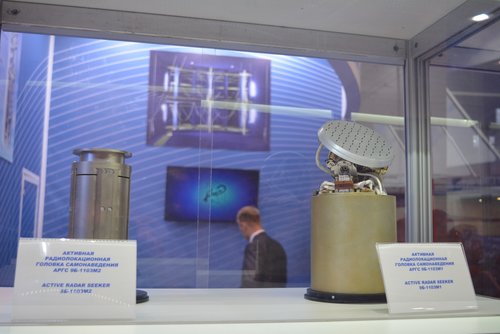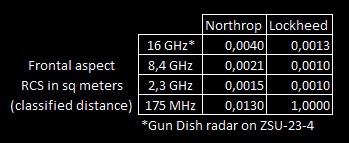- Joined
- 27 December 2005
- Messages
- 16,889
- Reaction score
- 21,590
https://www.proza.ru/2016/07/05/1862
In the 70s, a new class of microwave devices was born in Istok — integrated devices including, along with electronic devices, individual components of radar systems. The decisive contribution to the development of this direction was made by: Rebrov, SI, Gelvich, EA, Pokrovsky, EN, Panas, IM, Voskoboinik, MF, Kotov, AS, Kolesnikov, Yu.V., Vodyanitsky V.I. and etc.
The appearance of integrated devices served as a stepping stone to the creation of fully completed samples of radar equipment. The development of this direction was the creation by Istok of an active radar homing head for an air-to-air missile. Its ideologues and main developers: Rebrov S.I., Rusakov V.N., Zaitsev S.A., Potapov A.V., Khasyanov A.F., Il'in A.G., Batayev V.Ya., Lisitsyn A. .A., Yazan V.I., Gusev A.P., Torbik V.M., Mikhailov L.F. This direction has been actively developing for more than 10 years, along with the serial production of the 50E product, new ARGS is being developed. The main customer of these works is GosMKB Vympel.
...
The successfully completed SRED on ARGS was continued in accordance with the Decree of the Central Committee of the CPSU and the USSR Council of Ministers No. 722136 dated July 31, 1982, by the decision of the Commission of the Presidium of the USSR Council of Ministers on Military-Industrial Issues dated March 15, 1983 in the form of ROC "Synthesis 20" medium-range missiles. After conducting a full complex of tests, the rocket with the ARGS-50 was put into service in the early 1990s.
From this period, the direction of the development and production of active radar homing heads has become one of the main parts of the hardware direction of SPE "Source", in which the achievements of the enterprise for miniaturization and multifunctionality became the basis for obtaining a successful result.
In 1996–1997 An export version of the ARGS 50E was designed and mastered in production, designed for an air-to-air missile of medium range RVV-AE. In the period 1998–2005 released more than 1500 products 50E.
...
10 years 50E
Work on the creation of an export version of the active radar homing head 50E was started in July 1996, and a year later the process of mastering its serial production began. Even at the Directorate, not everyone was sure that Istok was capable of doing this, and we must pay tribute to AN Korolyov and S. A. Zaitsev, who managed to overcome all external and internal obstacles to serial production of 50E. A great personal contribution to the development of the product was made by Deputy General Director for Production Evgeny Nikolaevich Pokrovsky, and the chief technologist of the product Dmitry Georgievich Arapov. After all, in addition to assembling, setting up and testing the head, it was necessary to unleash the production of another fifteen most complex blocks from which the product was made.
It was not immediately decided where the 50E production would be deployed. Played a role that in the department 20 was an anechoic room and a sufficient number of specialists, radio operators.
The development of the product 50E began our most qualified specialists. From the very beginning, the process of mastering was led by A.F. Khasyanov, who had to prepare almost all the initial data on the redevelopment of an anechoic hall, the creation of jobs, energy requirements, ventilation and many other issues. Of course, with the active participation of the administration of the department, especially the deputy head of the department V.P. Stebunova. And V.I. Skopin, N.N. Kolesnichenko, R.A.Gizatullin, V.N. Grudtsov, M.A. Sakharov had to adjust and hand over the first products. Somewhat later they were joined by L.A. Shishmakova, K.Y. Saveliev, A.V.Efimov, V.Z.Goncharuk, N.V. Denisyuk. Pavel Garmashov headed the work with the block suppliers, A. Ovechkin took the test equipment into his hands, Yu.A. Rufimsky took the sealing equipment, and V. Sitdikov, the process documentation.
The first production samples of the 50E product appeared at the end of 1997, and in January 1998, serial deliveries began. And, as always, the first pancake was lumpy - almost 30 pieces of products had to be returned back, since a serious error was discovered in the software of the onboard computer developed by our partner, the Scientific-Research Institute Agat.
Unfortunately, this was not the only mistake. Substantial improvements, including the system plan, continued for several more years. The failures that have arisen because of this still go sideways.
Production of products grew rather quickly, and soon we noted the first 500 pieces of products manufactured and delivered to the customer.
...
The technical level of ARGS 50E itself is very high. It is not inferior to its closest competitor - American AMRAAM, and surpasses it in some parameters. And the issue of product reliability is one of the main ones, to which all these years much attention has been paid and paid. At the weekly dispatch meetings of the CEO, the issue of product failures and analysis of their causes is one of the main issues. The matter is complicated by the fact that in the country the production of components has not only declined, but has ceased in many positions, but their quality has deteriorated significantly.
Prospects
The product 50E remains and in the coming years will remain one of the main products of the Source. Moreover, the Directorate sets before us and adjacent divisions the task of increasing the output of the 50E product.
...
You still hold meetings on Thursdays on the development and supply of active homing heads for air-to-air missiles. This new direction in the "Source" was formed with your most active participation. How do you think, is it promising for Istok?
- The head direction was revived again at Istok in 1996 after Vympel signed the shipments of missiles to India. Istok for the years 97-99 has developed almost a new head and began to supply. This direction actually saved Istok. In 1999 - 2003, the revenue from the sale of the head was 45 - 55% of the total volume of the Source.
The head is an example of creating a complex electronic device in an electronic company. This is an example of the most optimal development of complex technology, when radar tasks instantly affect electronics tasks and vice versa - and all this is done in one enterprise. I think that such sophisticated radio-electronic devices will also be developed at Istok in the future. These may be new heads or complex submodules such as semi-finished AFAR. To do this, it is necessary to prepare personnel at the Istok, not only in traditional electronics, but also in other specialties - aircraft motion control, digital processing, etc.




